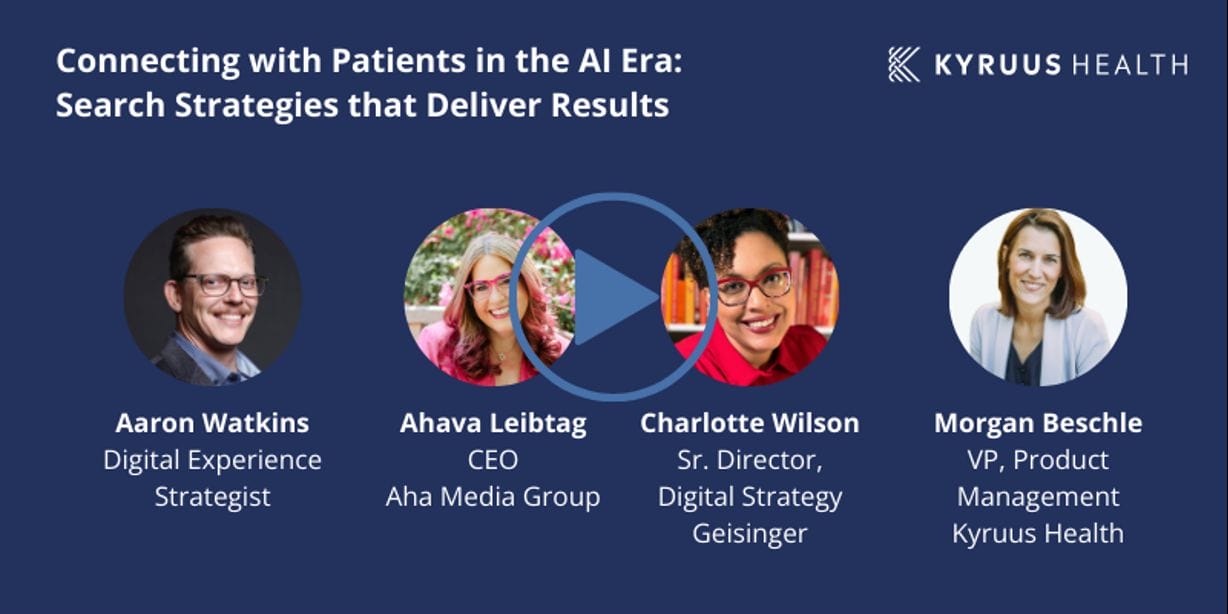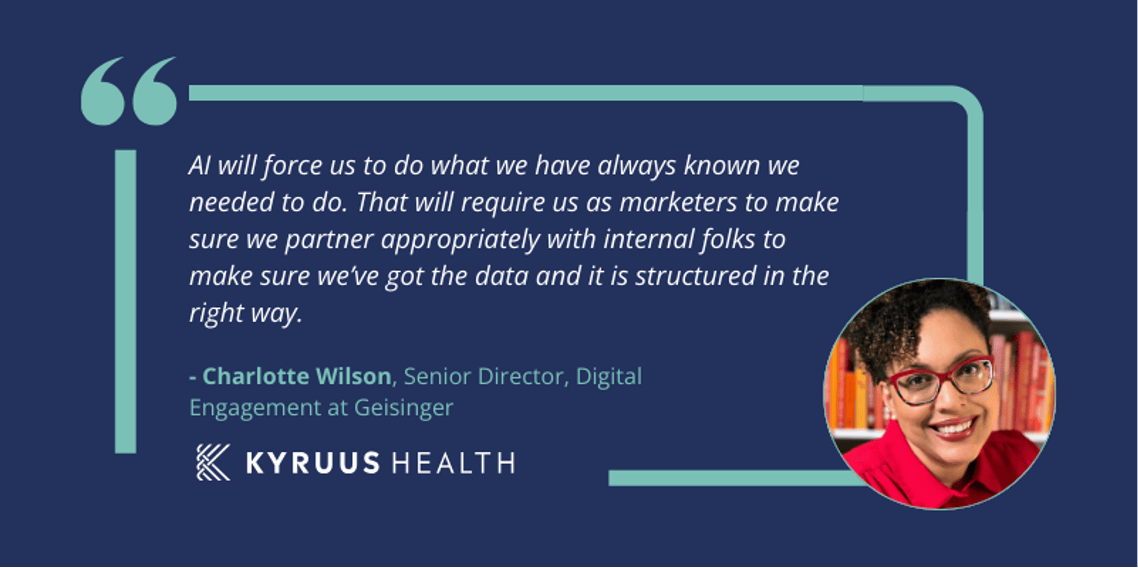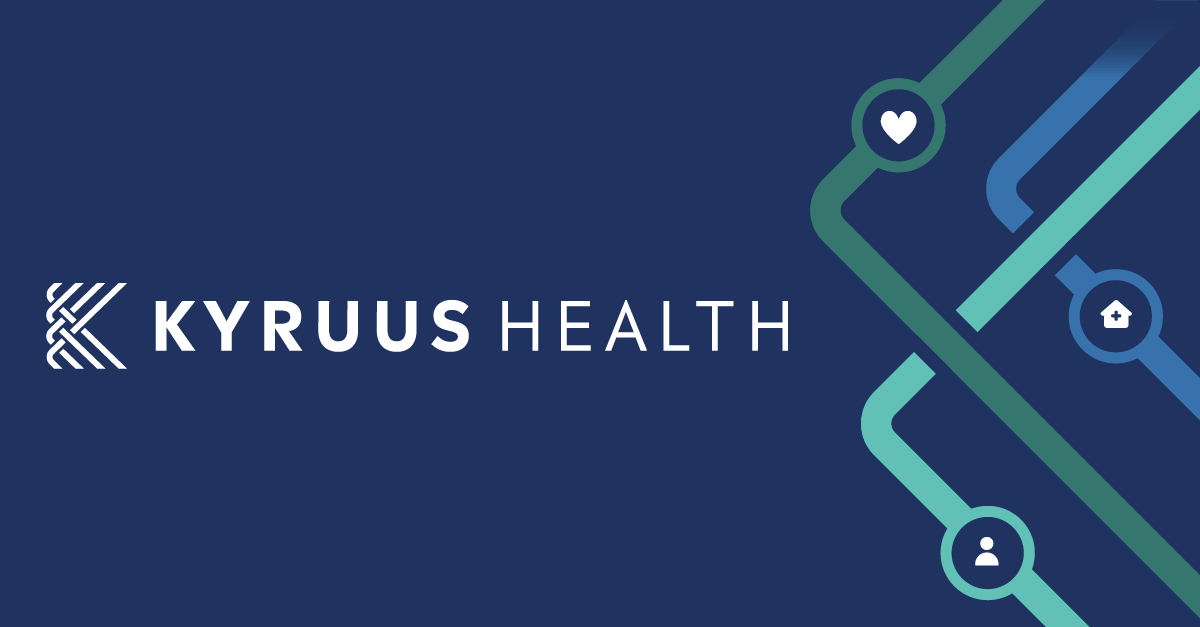This blog is part three of a three-part series. See part one to learn more about AI-powered healthcare search, and part two to learn about optimizing provider directories.
The way patients find and select healthcare is undergoing a major shift. AI search is reshaping the landscape, transforming the traditional patient journey. This evolution demands a strategic overhaul of your health system’s digital front door, with a laser focus on optimizing for conversion at every touchpoint.
In a recent Becker’s Healthcare webinar, industry experts Aaron Watkins, Ahava Leibtag, Charlotte Wilson, and Morgan Beschle dive into this topic.
 Interested in catching the full recording? Watch it here.
Interested in catching the full recording? Watch it here.
AI Search Is Reshaping How Patients Find Care: Are You Ready?
Patients are increasingly relying on AI-driven search, voice assistants, and social media for answers, often bypassing traditional hospital websites altogether. This shift necessitates a new approach to SEO and digital marketing more broadly, with a renewed emphasis on conversion-oriented strategies. Your provider data, service line pages, internal links, and third-party listings must work in harmony to provide a seamless user experience that guides patients toward action, whether it’s booking an appointment, seeking more information, or utilizing a specific service.
“It’s no longer just Google or Bing. They really could encounter your brand any place.”
– Aaron Watkins, Digital Experience Strategist
The Crucial Role of Your Health System’s Digital Front Door in the Age of AI
Even in the zero-click world, your website remains the heart of your digital front door. When patients do get to your website, they expect a seamless, informative, and action-oriented experience. A well-optimized digital front door can make all the difference in providing that seamless experience, ensuring that patients find the information they need quickly and efficiently—prompting the next step in a care journey. This includes multimedia like graphics, infographics, pictures, photographs, and short-form video, which are increasingly important for explaining information effectively and driving engagement that leads to conversion.
How Can You Optimize Your Health System’s Digital Front Door for AI Search?
A patient-centric digital front door anticipates and addresses the questions patients are asking, with a focus on guiding them toward conversion. Here’s how to optimize your health system’s digital front door for AI search:
Answer Real Patient Questions:
Craft content that directly answers the questions patients are posing. “You always want your content to be conversational and engaging,” advises Ahava Leibtag, CEO of Aha Media Group. Provide clear, credible information that establishes your organization as a trusted source. This involves understanding search intent, as AI tries to decipher whether a user searching “Jaguar” means the animal or the car. Your content should not only inform but also naturally lead users to take action, such as scheduling an appointment or contacting your facility.
Leverage Structured, Patient-First Content:
Search algorithms favor structured, well-written, patient-first content. Focus on clear, concise language that is easy for both patients and search engines to understand. “You want to use plain language, structured content is a must,” says Watkins, emphasizing the importance of structuring content for AI understanding. This ensures that AI tools can easily extract details and provide accurate information to users, while also facilitating a smooth conversion path.
Optimize Your Provider Directory with Accurate, Structured Data:
Your provider directory is a cornerstone of your health system’s digital front door, and its effectiveness in the AI era depends heavily on well-structured provider data. While a positive user experience necessitates accurate and accessible information, for AI search to optimally showcase your providers, this data must be meticulously organized and marked up using structured data formats like schema. Optimizing your provider directory for AI prioritizes the implementation of robust schema markup to clearly convey provider details—specialties, locations, contact information, accepted insurance, etc.—to search engines.
Morgan Beschle, VP of Product at Kyruus Health, highlights the importance of provider data management: “A centralized PDM system is the foundation for all of this,” says Beschle. This system must aggregate and reconcile provider data from various sources and facilitate its consistent syndication as structured data, leveraging schema.org. This structured approach ensures AI algorithms can readily understand your provider data, enhancing visibility in search results. Properly structured provider data acts as a clear signal to search engines, improving the discoverability of your providers and services, and ultimately fortifying your digital front door’s ability to attract relevant patient inquiries.
Actionable Steps to Enhance Your Health System’s Digital Front Door for Optimal Conversion
To capitalize on the changing search landscape and strengthen your health system’s digital front door, with a focus on maximizing conversion, consider these action steps:
Develop Content Geared Towards Humans and AI Tools:
Create content that addresses specific patient concerns and questions, strategically designed to guide them toward answers or conversion (a scheduled appointment). Ensure your content is developed with voice search and AI-driven platforms in mind. “You want to write for humans and AI,” suggests Leibtag, acknowledging the dual audience in the age of AI. This includes optimizing service line pages with concise answers, compelling CTAs, and FAQs to meet the zero-click search moment and drive consumers to take the next step.
Connecting Patients to the Right Care with a Consumer-Friendly Provider Directory:
While ensuring your provider directory is structured for AI discoverability is crucial, it’s equally vital to create a consumer-friendly experience that empowers patients to find the care they need. Your provider directory serves as a primary entry point to your health system, and a positive interaction here can significantly influence a patient’s decision to choose your services. To make your provider directory truly effective for consumers, focus on presenting the information that matters most to them in an easily digestible and actionable format.
Beyond basic contact details, prioritize showcasing information that helps patients make informed decisions. This includes clearly listing each provider’s specialties and sub-specialties, making it easy for individuals with specific health concerns to identify the most relevant experts. Detail the conditions and procedures each provider treats, using patient-friendly language rather than complex medical jargon. Visuals, such as professional headshots and videos, can also enhance engagement.
Intuitive search functionality is key. Enable patients to easily filter by specialty, location, accepted insurance, and appointment availability. Clearly display accepted insurance plans for each provider, a critical factor for many. Integrating online scheduling directly within the provider directory offers a seamless path to booking care. By focusing on the information that matters most to patients and simplifying the search and scheduling process, your provider directory becomes a powerful tool for guiding them to the best care for their needs.
Utilize CTAs and Online Scheduling to Convert Transaction-Ready Consumers
Place clear and prominent CTAs throughout your website and across other digital channels, guiding users toward desired actions. Leverage a user-friendly, unauthenticated (no login required) online appointment scheduling solution to convert transaction-ready consumers into patients. Aaron Watkins highlights the importance of these online transactions, stating, “When I think about AI and what the value of websites will be in the future, those kinds of transactional moments are the most important.” Consider implementing chat solutions to address common patient inquiries and streamline the conversion process. This focus on transactional moments is key to capturing patients who are ready to take action and convert.
Boost Your Visibility Across Third-Party Listings:
Ensure consistent and accurate information across all third-party listings. Don’t underestimate the importance of third-party listings, as they often serve as a primary point of contact for patients. Recent research has shown that only 10% of patients begin their search for care on a health system’s website. And as Ahava Leibtag points out, older generations may be more likely to gather information provided by third party listings than they are to go to ChatGPT.
Charlotte Wilson, Senior Director Digital Engagement at Geisinger, advises that it is crucial to maintain accurate and actionable data across all digital listings where consumers are looking, “whether it’s a Google Business Profile or Apple Maps.” These listings are important for both consumers and AI tools. Morgan Beschle adds to this, noting that Google Business Profiles are “verified sources of information” and that Google elevates this data. This means that accurate and consistent data in these listings is critical for building trust with both patients and AI algorithms, ultimately improving your visibility and driving conversions.
The Future of Your Health System’s Digital Front Door: Embracing AI, Patient-Centricity, and Conversion Optimization
The future of your health system’s digital front door lies in embracing AI, prioritizing the patient experience, and optimizing for conversion at every step. By focusing on clear, credible content, accurate provider data, strategic CTAs, and third-party listings, healthcare organizations can thrive in the evolving search landscape.
Your health system’s digital front door is the gateway to patient acquisition and engagement in the age of AI, and a powerful tool for driving conversions and achieving your healthcare organization’s goals. “The basics are still really going to matter,” says Leibtag, a sentiment also echoed by Charlotte Wilson. They remind us that while the landscape is changing, fundamental principles like great content, accurate, structured data and thinking about how patients navigate their journeys, remain crucial.

Looking for more on this topic? Download our new e-book: The New Patient Journey: Strategies for Healthcare Marketers in an AI-First World





